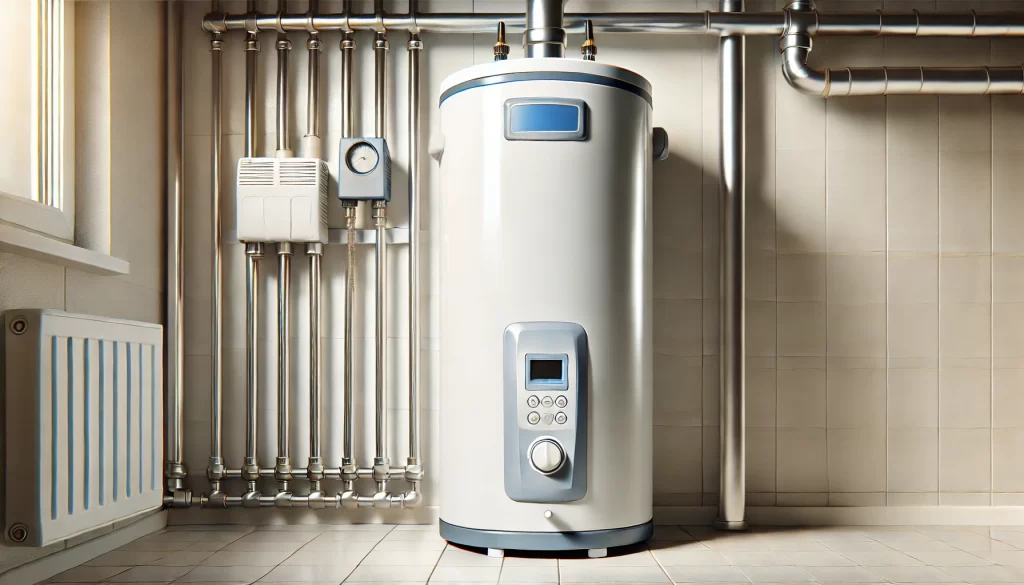
Water heaters are essential for daily comfort, providing hot water for bathing, cleaning, and cooking. When issues arise, deciding whether to repair or replace your water heater depends on the severity and cost of the repair.
Simple fixes like replacing a valve can be cost-effective, while more extensive repairs might warrant a replacement. If your hot water tank stops working, start by checking basic components like the power supply or pilot light.
Repairing a water heater often involves replacing parts like thermostats, heating elements, or valves, which can typically cost between $20 and $200. Here are ten typical water heater problems and how to address them.
No Hot Water
No hot water usually results from power supply issues, thermostat malfunctions, or faulty heating elements in electric water heaters. In gas water heaters, it often stems from an extinguished pilot light or a malfunctioning thermocouple. To detect these issues, check the circuit breaker, inspect the thermostat settings, and ensure the pilot light is lit.
- Electric Water Heater: Ensure the circuit breaker hasn’t tripped and the fuse hasn’t blown. Inspect the thermostat and heating elements and replace these components if faulty.
- Gas Water Heater: Ensure the pilot light is lit. If not, relight it according to the manufacturer’s instructions. If the pilot light doesn’t stay lit, replace the thermocouple.
Inadequate Hot Water
Inadequate hot water often results from an undersized water heater, sediment buildup, or a malfunctioning heating element. To detect these issues, measure the hot water output relative to your household needs, inspect for sediment buildup, and test the heating elements.
- Tank size: Ensure the water heater is adequate for your needs. Limit shower times, install low-flow showerheads, and schedule dishwashing and laundry at different times. Replace the heating element if necessary.
Water Temperature Is Too Hot
Water that’s too hot typically results from thermostat settings being too high or a malfunctioning thermostat. To detect this, check the thermostat settings and measure the water temperature.
- Check the thermostat settings: Ensure it’s set to no more than 120°F. Replace the thermostat if necessary.
Water Heater Is Leaking
Leaks can occur due to loose plumbing connections, a faulty pressure relief valve, or a corroded tank. To detect the source of leaks, inspect all connections and look for signs of corrosion.
- Tighten any loose connections. Replace the pressure relief valve if necessary. If the tank itself is leaking due to corrosion, replace the tank.
Rust-Colored Water or Bad Odor
Discolored water or a foul odor might indicate corrosion or bacteria in the tank. To detect this, check for rust in the water and a rotten egg smell.
- Replace the anode rod to resolve discoloration. For odors, flush the tank with a hydrogen peroxide solution to eliminate bacteria.
Tank Making Noises
Noises such as popping or rumbling often result from sediment buildup in the tank. To detect this issue, listen for unusual sounds.
- Flush the tank to remove sediment. Persistent noise might indicate a failing heating element or pressure issues, which require professional inspection.
Leaking Cold Water From an Inlet
If you notice a leak from the cold water inlet, it may just be a loose connection. To detect this, check for water pooling around the inlet.
- Turn off the water supply and tighten the inlet connection.
Damaged Pressure Relief Valve
A leaking pressure relief valve usually needs replacement. To detect this, inspect the valve for leaks.
- Turn off the power and water supply, drain some water from the tank, and replace the valve with a new one.
Water Heater Is Leaking From the Sides
Leaks from the sides often indicate internal corrosion or a faulty gasket. To detect this, look for water seeping from the sides of the tank.
- Replace the gasket if faulty. If the tank is leaking due to internal corrosion, replace the entire tank.
High Energy Bills
A sudden increase in energy bills can indicate your water heater is not running efficiently. Sediment buildup, a malfunctioning thermostat, or an old unit are common causes. To detect this, monitor your energy usage and inspect the tank for sediment.
- Flush the tank, check the thermostat, and consider replacing the unit if necessary.
Maintenance Tips to Prevent Water Heater Problems
Regular maintenance can prevent many issues. To maintain your water heater, flush the tank annually, inspect and replace the anode rod every few years, and regularly check the pressure relief valve.
When to Call a Professional
Seek professional help if you’re uncomfortable performing any repairs yourself, if issues persist after troubleshooting, or if there are gas supply or complex electrical problems. Persistent leaks also require a professional inspection.
Costs and Considerations
- Replacing Thermostats/Elements: $100-$300
- Replacing Anode Rod: $20-$50 (DIY), $150-$300 (Professional)
- Flushing the Tank: $80-$100
- Replacing Pressure Relief Valve: $20-$200
- Professional Service Calls: $150-$400
Safety and Warnings
- Warning: Always turn off the power and water supply before performing any repairs.
- Safety Tip: Ensure there are no gas leaks when dealing with gas water heaters.
- Caution: Consult a professional to avoid health risks like Legionella if bacterial contamination is suspected.
By understanding these common water heater problems and their solutions, you can troubleshoot and fix many issues yourself. However, never hesitate to seek professional help when needed to avoid potential hazards and ensure your water heater’s longevity and efficiency.